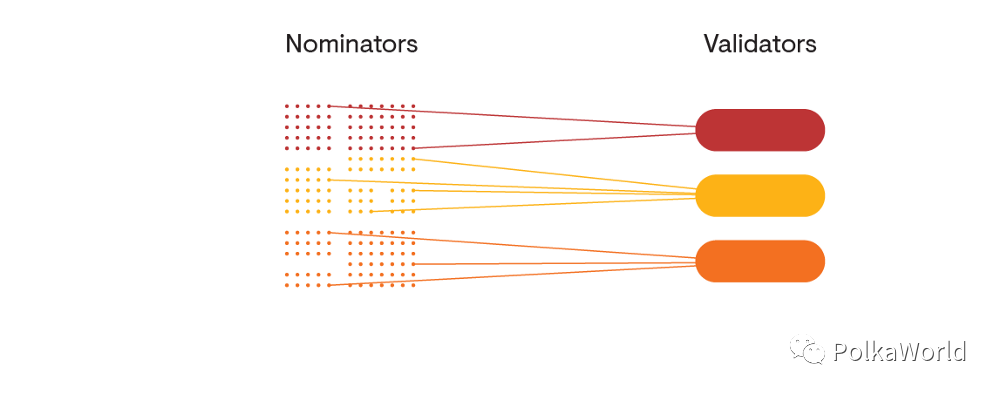Technical Guide | How does Poka's NPoS mechanism work?
Source of this article: PolkaWorld
Author: Alfonso Cevallos
- Opinion | Monetization of Bitcoin and Ethereum: Who can be the next world currency?
- Babbitt Column | Cai Weide: Blockchain is used for credit information to build a "Taoyuan World"
- Introduction to Blockchain | Why do miners overclock and downclock?
The system also encourages any DOT holder to participate as a nominee . The nominee published a list of candidates he trusted and pledged a certain number of DOTs to support them. If some of these candidates are selected as validators, he will get a corresponding return of interest based on the proportion of the pledged amount. Unlike validators, there is no limit to the number of nominees. As long as the nominee chooses and only supports candidate validators with good security practices, his risk is low and there is a continuous source of income. There are other special roles in the Polkadot network, but we only focus on the relationship between these two roles.

Our NPoS scheme is much more efficient than the proof-of-work mechanism (PoW) and much faster than the proof-of-stake mechanism (PoS): it allows almost all participants with DOT to continue to participate, thereby maintaining a high level of security , While limiting the number of verification nodes, so all basic network operations are efficient.

Fair representation. At the end of the 19th century, Swedish mathematician Lars Edvard Phragmén proposed a method of electing members of the Swedish Parliament. He noted that the election method at the time tended to give all seats to the most popular parties; instead, his new method ensured that the number of seats allocated to each party was proportional to the votes given to them, so it gave minority More representation. The attributes obtained through his method are formally called proportional justified representations, and are very suitable for NPoS elections because it ensures that any node pool is neither over-represented by the validators selected nor selected. The outgoing validators are too low representatives, but proportional to their pledges. Our inspiration is based on Phragmén's ideas and ensures that every election has this nature.



We are excited about the technical developments proposed by Polkadot and the possibilities brought about by NPoS and other efficient solutions developed in the blockchain field. You can learn more on the Web3 Foundation research page and Polkadot wiki. To learn about Polkadot's development, follow Polkadot on Twitter and join the newsletter.
Web3 Foundation Research : http://research.web3.foundation/
Polkadot wiki : http://wiki.polkadot.network/
Polkadot Twitter : https://twitter.com/polkadotnetwork
Newsletter : http://eepurl.com/gbyVCD
Original: https://medium.com/web3foundation/how-nominated-proof-of-stake-will-work-in-polkadot-377d70c6bd43
We will continue to update Blocking; if you have any questions or suggestions, please contact us!
Was this article helpful?
93 out of 132 found this helpful
Related articles
- Viewpoint | The Cyber Revolution in the Digital Securities Industry: How Can Sovereign Digital Identity Bring New Liquidity to Digital Securities?
- Blockchain Weekly | Tesla, Nestlé and other big companies apply blockchain; BCH and BSV are both halved
- Introduction | Cryptocurrency Derivatives and the World of Digital Financial Assets
- Babbitt's weekly selection 丨 BCH halving failed to promote the rise, halving effect is exclusive to Bitcoin; DeFi "Big Bang" or coming
- Observation | Hunan is building a 100 billion-level blockchain industrial park, and Shandong, Chongqing and other four provinces are gaining momentum
- Babbitt column | The payment revolution under the epidemic: What does it bring to CBDC?
- Introduction to Blockchain | In-depth understanding of Orphan Block: Orphan Block is actually a stale block






